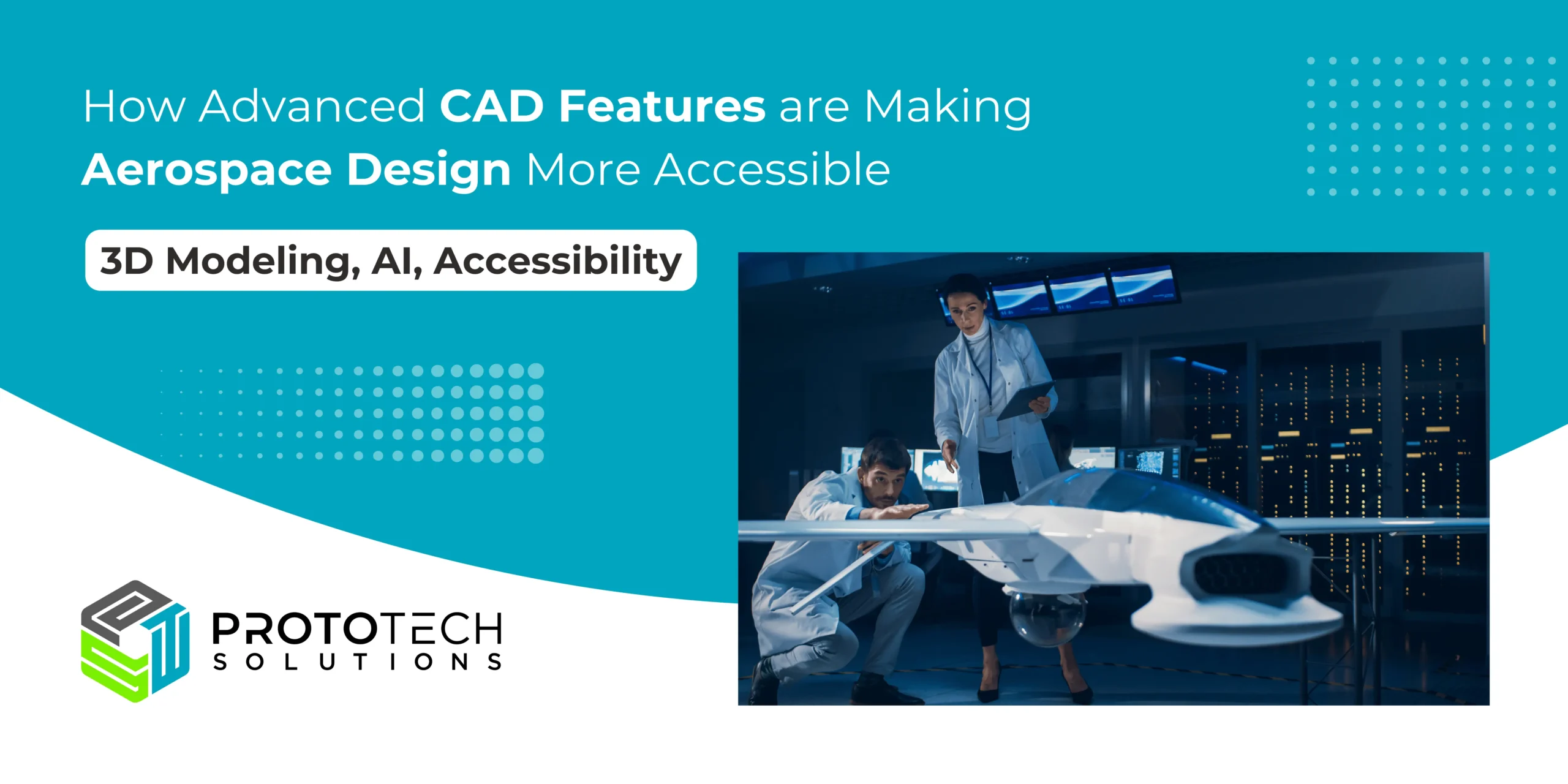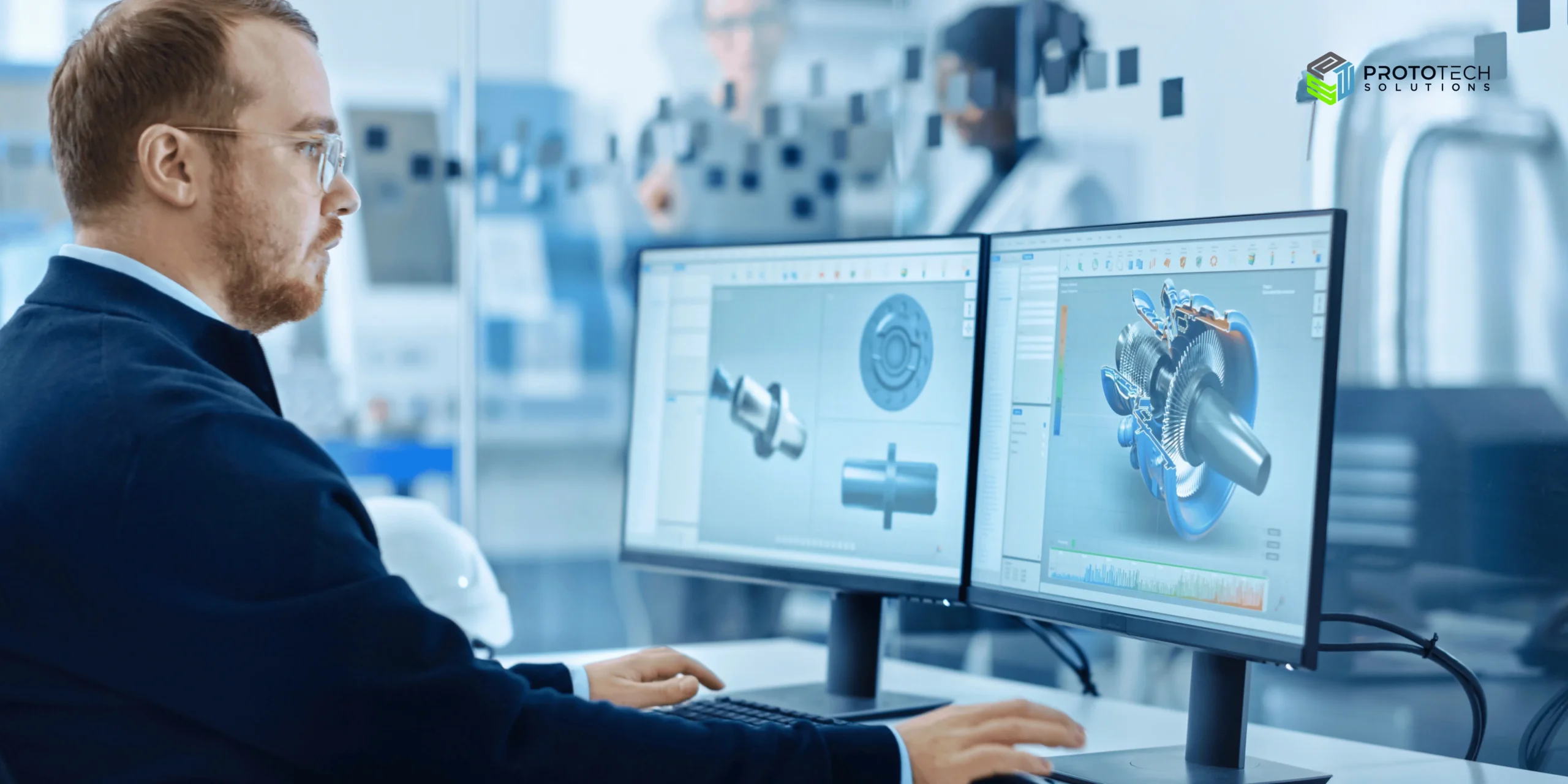How Advanced CAD Features are Making Aerospace Design More Accessible
How Advanced CAD Features are Making Aerospace Design More Accessible

CAD, or computer-aided design (CAD) is a powerful tool for aerospace engineers to create, modify, and optimize their products. It can help design more efficient, reliable, and innovative aircraft, rockets, satellites, and other systems. But how can aerospace engineers use CAD to make their products more accessible? Computer-aided design (CAD) has long been a staple in aerospace engineering, but recent advancements are revolutionizing the field, making aerospace design more accessible than ever before.
The aerospace parts manufacturing market size was valued at USD 6.45 billion in 2023, according to “Market Research Future.” The market is projected to grow from USD 6.71445 billion in 2024 to USD 8.5450 billion by 2030, exhibiting a compound annual growth rate (CAGR) of 4.10% during the forecast period (2024 – 2030). The key market drivers enhancing the market growth include the rise in air passenger traffic, increase in import-export of goods, and increase in the rate of aircraft fleet replacement.
Aerospace engineering is a complicated field that covers many areas like aerodynamics, structures, engines, control systems, and electronics. Creating a product that performs well, is safe, affordable, and eco-friendly is challenging. Computer-aided design (CAD) software helps aerospace engineers make this process easier. It allows them to model, simulate, test, and validate their ideas in a virtual space. CAD also lets aerospace engineers work together and communicate with other stakeholders, such as manufacturers, customers, regulators, and operators.
In the highly dynamic field that continually advances alongside new technologies, standards, and regulations. Ensuring that products are compatible with existing and future systems and infrastructure is essential. Computer-aided design (CAD) plays a pivotal role in this process by enabling aerospace engineers to seamlessly integrate and exchange data across various software and hardware platforms. Moreover, CAD empowers engineers to adapt and refine their designs in response to evolving market demands and societal expectations. This flexibility not only enhances product performance but also ensures they remain at the forefront of innovation in the aerospace industry.
In this article, you will learn how CAD features are transforming aerospace design, opening doors for new players, and fostering a culture of innovation.
The Evolution of CAD in Aerospace

CAD software has come a long way since its inception in the 1960s. Initially, it provided a digital alternative to manual drafting, offering greater precision and the ability to easily modify designs. Over the decades, CAD systems have incorporated 3D modeling, simulation, and analysis tools, becoming indispensable in the complex and highly regulated aerospace industry.
Today, CAD software is more powerful, intuitive, and accessible, thanks to several key advancements:
- Advanced 3D Modeling and Visualization
- Simulation and Analysis Integration
- Collaborative Design Tools
- AI and Machine Learning Integration
- Cloud-Based Platforms
- Improved User Interfaces and Accessibility
Advanced 3D Modeling and Visualization
One of the most significant advancements in CAD technology is the ability to create detailed 3D models with high precision. Modern CAD systems allow engineers to build complex geometries and realistically visualize them. These 3D models provide a comprehensive view of the aircraft, from the overall structure down to the smallest components.
Advanced rendering techniques and virtual reality (VR) integration enable engineers and designers to immerse themselves in the design, inspect every detail, and identify potential issues early in the process. This level of detail and immersion is crucial for aerospace design, where precision and safety are paramount.
Moreover, parametric modeling capabilities enable designers to create adaptable models that can be easily modified and optimized. This flexibility is essential in the aerospace industry, where designs often undergo numerous iterations before final approval.
Simulation and Analysis Integration
Integrating simulation and analysis tools directly into CAD software has been a game-changer for aerospace design. These tools allow engineers to test and validate their designs under various conditions without the need for physical prototypes.
Finite Element Analysis (FEA) and Computational Fluid Dynamics (CFD) are two critical simulation tools integrated into modern CAD systems. FEA helps in understanding how structures will respond to forces, such as stress, vibration, and heat. CFD, on the other hand, is used to analyze fluid flow around the aircraft, which is essential for aerodynamic performance.
By running these simulations early in the design process, engineers can identify and resolve potential issues, reducing the need for costly and time-consuming physical testing. This integration also accelerates the design cycle, allowing for faster innovation and development.
Collaborative Design Tools
Aerospace design projects are inherently collaborative, involving teams of engineers, designers, and other stakeholders spread across different locations. Modern CAD platforms have embraced this collaborative nature by incorporating tools that facilitate real-time collaboration and communication.
Cloud-based CAD solutions allow team members to work on the same design simultaneously, regardless of their physical location. This ensures that everyone is on the same page, reduces the risk of errors, and speeds up the design process. Additionally, version control features ensure that changes are tracked and managed effectively, preventing the loss of important data and maintaining the integrity of the design.
Collaborative tools also extend to suppliers and manufacturers, enabling seamless communication and integration throughout the supply chain. This holistic approach to design and production ensures that the final product meets all specifications and quality standards.
AI and Machine Learning Integration
Artificial Intelligence (AI) and Machine Learning (ML) are making significant inroads into the world of CAD, bringing new levels of automation and optimization to aerospace design. These technologies can analyze vast amounts of data and provide insights that would be impossible for humans to achieve manually.
In CAD, AI and ML algorithms can suggest design improvements, optimize material usage, and predict potential failure points. For example, generative design algorithms can automatically generate multiple design alternatives based on specified constraints and performance criteria. This allows engineers to explore a broader range of design options and identify the most efficient and effective solutions.
AI-driven tools can also automate repetitive tasks, such as creating standard components or conducting routine analyses, freeing up engineers to focus on more complex and creative aspects of the design process. This not only improves efficiency but also enhances the overall quality of the designs.
Cloud-Based Platforms
The shift to cloud-based CAD platforms has made aerospace design more accessible and flexible. These platforms offer several advantages over traditional, on-premise software:
- Scalability: Cloud-based solutions can easily scale to accommodate projects of any size, from small components to entire aircraft designs.
- Accessibility: Designers and engineers can access the software from anywhere, using any device with an internet connection. This is particularly beneficial for remote teams and global collaborations.
- Cost-Effectiveness: Cloud-based CAD solutions typically operate on a subscription model, reducing the upfront costs associated with purchasing and maintaining expensive software and hardware.
- Automatic Updates: Cloud platforms ensure that users always have access to the latest features and security updates without the need for manual installations.
Improved User Interfaces and Accessibility
Modern CAD systems have also seen significant improvements in user interfaces (UIs) and overall accessibility. Intuitive UIs make it easier for new users to learn and navigate the software, reducing the learning curve and increasing productivity.
These improvements are particularly important in aerospace design, where precision and attention to detail are crucial. User-friendly interfaces allow engineers to focus on the design itself rather than struggling with complex software. Additionally, customizable UIs enable users to tailor the software to their specific needs and workflows, further enhancing efficiency and effectiveness.
Accessibility features, such as support for multiple languages and compatibility with assistive technologies, ensure that CAD tools are usable by a diverse range of professionals. This inclusivity is essential for fostering a diverse and innovative workforce in the aerospace industry.
Compliance and Standards Verification
- Regulatory Standards: The aerospace industry is subject to stringent regulatory standards, including those related to accessibility. CAD tools can help engineers ensure compliance with these standards by providing detailed documentation and analysis of design elements. This includes adherence to regulations set by bodies such as the Federal Aviation Administration (FAA) and the European Union Aviation Safety Agency (EASA).
- Accessibility Standards: Beyond regulatory standards, there are specific accessibility guidelines that aerospace products must meet. CAD software can be used to verify compliance with standards such as the Americans with Disabilities Act (ADA) and the Air Carrier Access Act (ACAA). This includes ensuring that lavatories, seating, and aisles meet the required dimensions and accessibility features.
Real-World Applications and Success Stories
The impact of advanced CAD features on aerospace design is evident in numerous real-world applications and success stories. Here are a few examples:
- Boeing’s 787 Dreamliner: Boeing utilized advanced CAD tools to design the 787 Dreamliner, one of the most technologically advanced commercial aircraft. The integration of 3D modeling, simulation, and collaborative design tools allowed Boeing to streamline the design process, reduce weight, and improve fuel efficiency.
- SpaceX’s Falcon 9 Rocket: SpaceX has leveraged cutting-edge CAD software to design and iterate on the Falcon 9 rocket. The use of advanced simulation tools has enabled SpaceX to optimize the rocket’s performance and ensure its reliability for multiple missions.
- Airbus A350 XWB: Airbus employed advanced CAD features to design the A350 XWB, a wide-body commercial airliner. The use of cloud-based collaboration tools facilitated global teamwork, while simulation and analysis tools ensured that the aircraft met stringent safety and performance standards.
The Future of CAD in Aerospace Design

The future of CAD in aerospace design is bright, with ongoing advancements promising even greater accessibility and innovation. Emerging technologies such as augmented reality (AR), the Internet of Things (IoT), and blockchain are poised to further transform the way we design and build aircraft.
- Augmented Reality (AR): AR can enhance CAD systems by overlaying digital models onto the real world, providing a more immersive and interactive design experience. This technology can help engineers visualize how components will fit and function in the physical world, reducing errors and improving design accuracy.
- AI and Machine Learning: The integration of Artificial Intelligence (AI) and Machine Learning (ML) with CAD systems is set to revolutionize accessibility in aerospace design. AI algorithms can analyze vast amounts of data to identify potential accessibility issues and suggest design improvements. This will enable engineers to create even more inclusive and user-friendly products.
- Internet of Things (IoT): IoT integration in CAD software can enable real-time data collection from sensors embedded in aircraft components. This data can be used to inform design decisions, optimize performance, and predict maintenance needs, leading to smarter and more efficient aircraft.
- Blockchain: Blockchain technology can enhance the security and transparency of the design process. By providing a secure, immutable record of all design changes and transactions, blockchain can ensure the integrity of the design and manufacturing process, reducing the risk of counterfeit parts and improving traceability.
Need CAD Outsourcing for Your Aerospace Parts Manufacturing?
As technology continues to evolve, the future of aerospace design looks promising, with new opportunities for innovation and collaboration on the horizon. Whether you are a seasoned aerospace engineer or a newcomer to the field, the latest advancements in CAD software offer the tools you need to turn your visions into reality and contribute to the next generation of aerospace marvels.
Need outsourcing for your aerospace parts manufacturing? ProtoTech Solutions is your premier partner for Mechanical CAD design and drafting services. Our expert team delivers high-quality, precise aerospace designs, ensuring innovation and accuracy in every project. We specialize in CAD customization, automation, and comprehensive design solutions tailored to your specific needs.
Software Expertise: AutoCAD, Fusion 360, CATIA, SolidWorks, PTC Creo, Autodesk Inventor, Revit, Autodesk 3ds Max, and more.
Trust ProtoTech Solutions to enhance your productivity, reduce costs, and accelerate your project timelines. With cutting-edge technology and a commitment to excellence, we turn your aerospace design challenges into streamlined, effective solutions.
